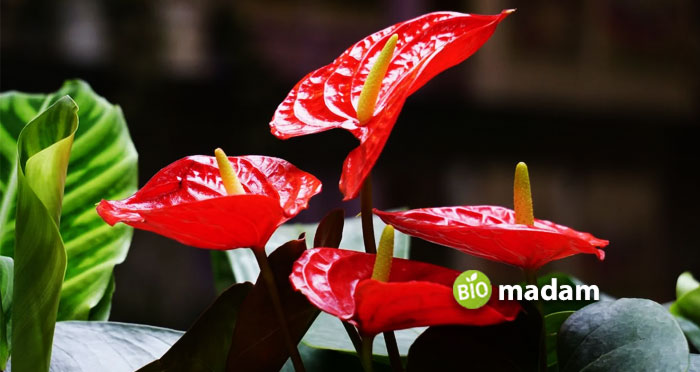Bryophytes and pteridophytes are lesser-known plant categories besides the well-known gymnosperms and angiosperms. These plant groups include ferns and mosses, which differ from shrubs, bushes, trees, and other tall plants. Pteridophytes are vascular plants while non-vascular consists of bryophytes. They comprise antheridia and archegonia, which are involved in sexual reproduction in bryophytes and pteridophytes. Antheridia are the male parts involved in reproduction while archegonia are female counterparts. Let’s tell you more about the difference between antheridia and archegonia.
Comparison Table
| Characteristics | Antheridia | Archegonia |
| Definition | Male reproductive part | Female reproductive part |
| Location | Androecium | Gynoecium |
| Function | Sperm production | Egg production |
| Structure | Club-shaped | Flask-shaped |
| Components | Outer jacket, cubic spermatozoal sperm cells | Venter and Canal cells |
| Number of Gametes | Multiple | One |
| Motility | Motile | Non-motile |
| Sterile Cells | Absent | Present |
| Gymnosperms | Pollen grains | Structures in megagametophytes |
What are Antheridia?
Antheridium, plural antheridia, are male sex organs in bryophytes and pteridophytes. They produce male gametes in cryptogams to facilitate sexual reproduction. Antheridia are contained in structures called androecium. An antheridium is a haploid structure that produces male gametes known as sperms or antherozoids. Antheridia are mainly only found in the gametophyte of ferns, mosses, algae, and bryophytes. The antheridia in types of gymnosperms and angiosperms produce pollen grains, forming a single generative cell.
Antheridia are club-shaped, comprising spermatogenous tissue and sterile cells. The spermatogenous tissues undergo mitosis through cytokinesis to give rise to spermatids, while the sterile cells act as a protective covering. The cryptogams contain motile sperm; thus, these plants require water for fertilization.

What is Archegonia?
Archegonia are also parts of bryophytes and pteridophytes. However, they are involved in the production of female gametes in cryptogams. The female gametes produced by archegonia are known as ova or eggs. They are found in the thallus of the gametophyte and are smaller in gymnosperms. The archegonia in gymnosperms are embedded in megagametophytes. These structures in both gymnosperms and cryptograms produce only one cell or egg. The motile sperms swim through the water films to reach the archegonia.
Archegonium looks flask-like in shape and comprises a base and a venter. The venter is the long neck-type structure that contains the venter canal cells and eggs. Six vertical rows of neck cells surrounded the neck canal cell. The ovule is present in the nucleus or megasporangium diploid cells in gymnosperms. The ovule has the female germ cells or eggs that are fertilized by the sperms later.

Similarities between Antheridia and Archegonia
- They are reproductive structures in pteridophytes and bryophytes
- Both structures give rise to sex gametes
- Antheridium and archegonium are haploid structures
- They do not exhibit their reproduction processes openly
Differences between Antheridia and Archegonia
Definition
Antheridia
They are the male reproductive structures in cryptogams.
Archegonia
On the other hand, they are present as the female reproductive structures in cryptogams.
Location
Antheridia
Antheridia are present in the androecium.
Archegonia
On the contrary, archegonia are located within the gynoecium.
Function
Antheridia
Antheridia give rise to the male gametes, also known as sperms.
Archegonia
Archegonia, in contrast, are responsible for the production of female gametes or eggs.
Structure
Antheridia
They are club-shaped, shorter structures on a multicellular stalk.
Archegonia
Archegonia have a comparatively longer flask-shaped structure on a shorter stalk.
Components
Antheridia
Antheridium has an outer jacket-like covering with numerous cubic spermatozoal sperm mother cells.
Archegonia
On the other side, archegonia comprises the venter that encloses the canal cells and the eggs.
Number of Gametes
Antheridia
Antheridia give rise to a large number of male gametes.
Archegonia
Archegonia produces only one female gamete or egg.
Motility
Antheridia
Antheridia give rise to motile sperm cells that travel toward the ovum.
Archegonia
Archegonia, in contrast, produces immotile eggs that do not travel; the sperms travel through water to fertilize the eggs.
Sterile Cells
Antheridia
Antheridia do not contain sterile cells.
Archegonia
Sterile cells are actively present in archegonia.
Gymnosperms
Antheridia
Pollen grains replace antheridia in gymnosperms.
Archegonia
The megagametophytes have reduced structures embedded in them in place of archegonia.
The Bottom Line
Antheridia and archegonia are reproductive structures in cryptogams. The main difference between antheridia and archegonia is that they produce male and female gametes respectively. Antheridia are male reproductive structures, while archegonia are female reproductive organs in bryophytes. The former gives birth to male gametes, sperms that travel through water for fertilization. Similarly, the latter produces female gametes called eggs that are immotile. They contribute to sexual reproduction in bryophytes and pteridophytes.
FAQs
What is the difference between archegonium and archegonia?
Archegonium and archegonia are the same structures but differ in singular and plural forms. Archegonium refers to a single structure, while archegonia are plural. They are present on the surface of plant thallus and look like a long flask. They produce female gametes called eggs.
What plants have archegonia and antheridia?
Archegonia and antheridia are parts of bryophytes and pteridophytes. Bryophytes are the amphibians of the plant kingdom, living in the soil but using water for fertilization. The sperms from the antheridia use water to reach the archegonia for fertilization.
Is archegonium haploid or diploid?
Archegonium and antheridium are haploid structures formed by the megasporangium. They contribute to the production of female gametes (eggs) in cryptogams.

Hello, I would like to introduce myself to you! I am Chelsea Rogers, an experienced blog writer for science articles, holding an MPhil degree. My enthusiasm to grab the best knowledge, let it relate to botany, zoology, or any other science branch. Read my articles & let me wait for your words s in the comment section.

